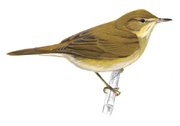I stopped off last night at the Quoile Hide and regrettably due to the lack of management the area in front of the hide the reeds are growing up so fast that it is becoming very difficult to see much. However I did see this Heron dart forward and come up with an eel that was at least 18 inches long. Well over the next ten minutes I watched the eel being swallowed alive and writhing around in the gullet of the Heron before popping back up and escaping before again being grabbed and banged around. The eel was entwining itself completely round the Heron's bill and again slipped from the Heron's grasp. Yet again the heron ran forward and grabbed it. It appeared to be trying to serrate it up and down its bill. At this stage there was a certain amount of blood flowing from the eel, who was determined not to give up the struggle. It was swallowed again and yet again it came back up and slipped out of the heron's mouth. Sadly this time the heron stabbed it right in the head and it was swallowed with no more defence. After which the heron proceeded to rub its beak back and forwards against the reeds, which I assume was to get rid of the slime. Nature is cruel. I didnt have a camera with me but here is another picture of a Heron with unexpected prey. See HERE and after it drowns it See Here
At lunchtime today I popped down to the RSPB Hide on Belfast Harbour, fortunately my new job means that I am only 5 mins drive away. Anthony the warden was there with his brother and we went to see if there were any Reed Warblers.
 Anthony is very good on identifying birds by sound. I have to admit I have difficulty in determining the difference between Sedge Warbler and Reed Warbler .Anthony then phished the birds.
Anthony is very good on identifying birds by sound. I have to admit I have difficulty in determining the difference between Sedge Warbler and Reed Warbler .Anthony then phished the birds.What is phishing?
Phishing refers to a group of noises that birders make in the hope of attracting birds; some noises work better than others. Time of day, time of year, weather, ambient noise, crowds and even too much pishing can affect the success of the procedure. True phishing (various silibant noises made by forming "s" or "sh" sounds with the tongue); the theory is that pishing throws out an array of frequencies taken to be alarm calls. These alarm calls are recognized mostly by Passerines. I think most people are of the view that a limited use of pishing to attract shy birds in a setting where the bird will not be repeatedly bothered -- and where you are not interfering with nesting of or brooding course -- is not likely to be very stressful to the bird and hence is acceptable. Views are more mixed on tapes, with some people finding it both unwarranted and unnecessary and others thinking it perfectly acceptable if used cautiously. I am of the latter view.
Anyway it was successful and this Reed Warbler appeared ;another for my year list :-)
No comments:
Post a Comment